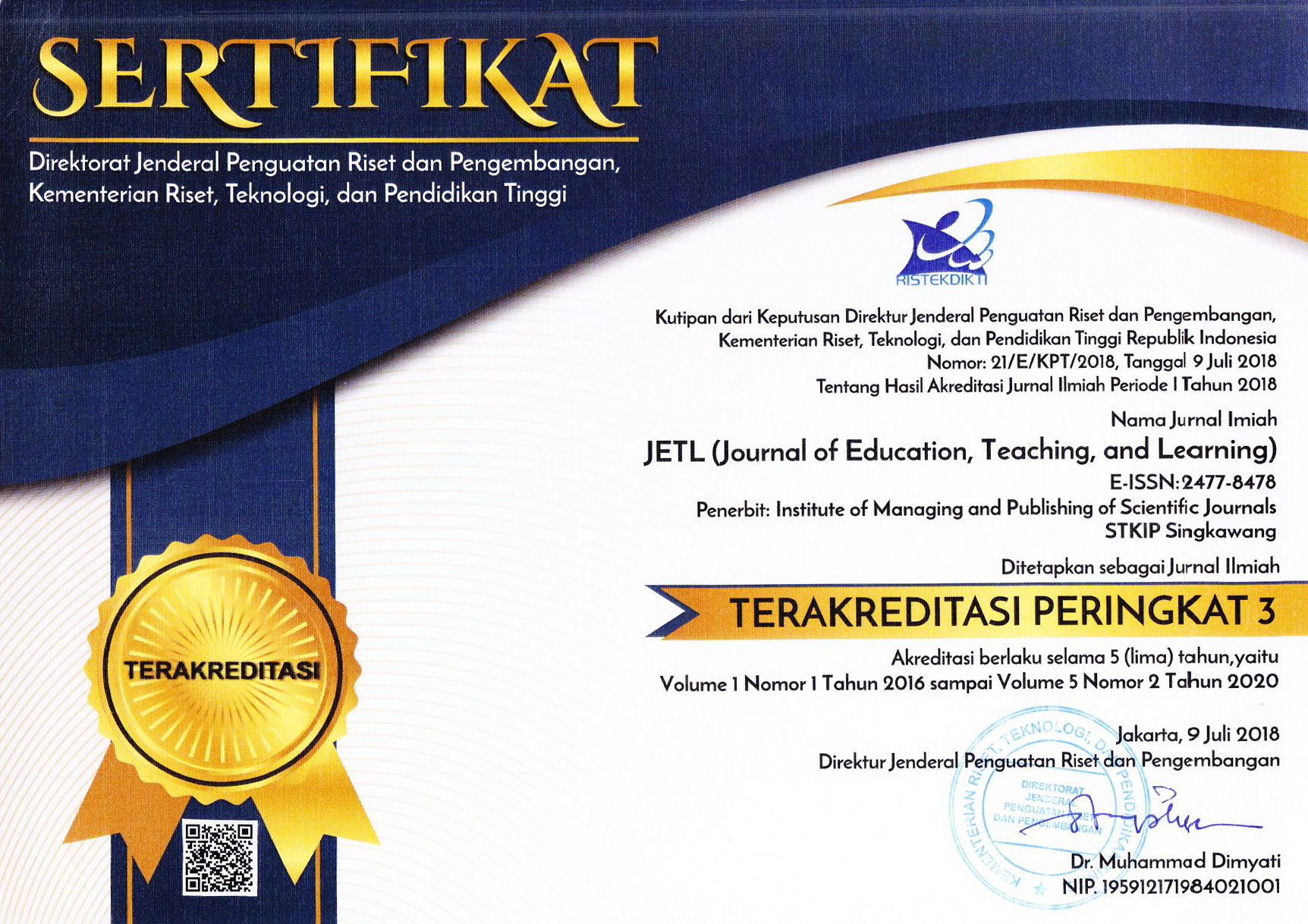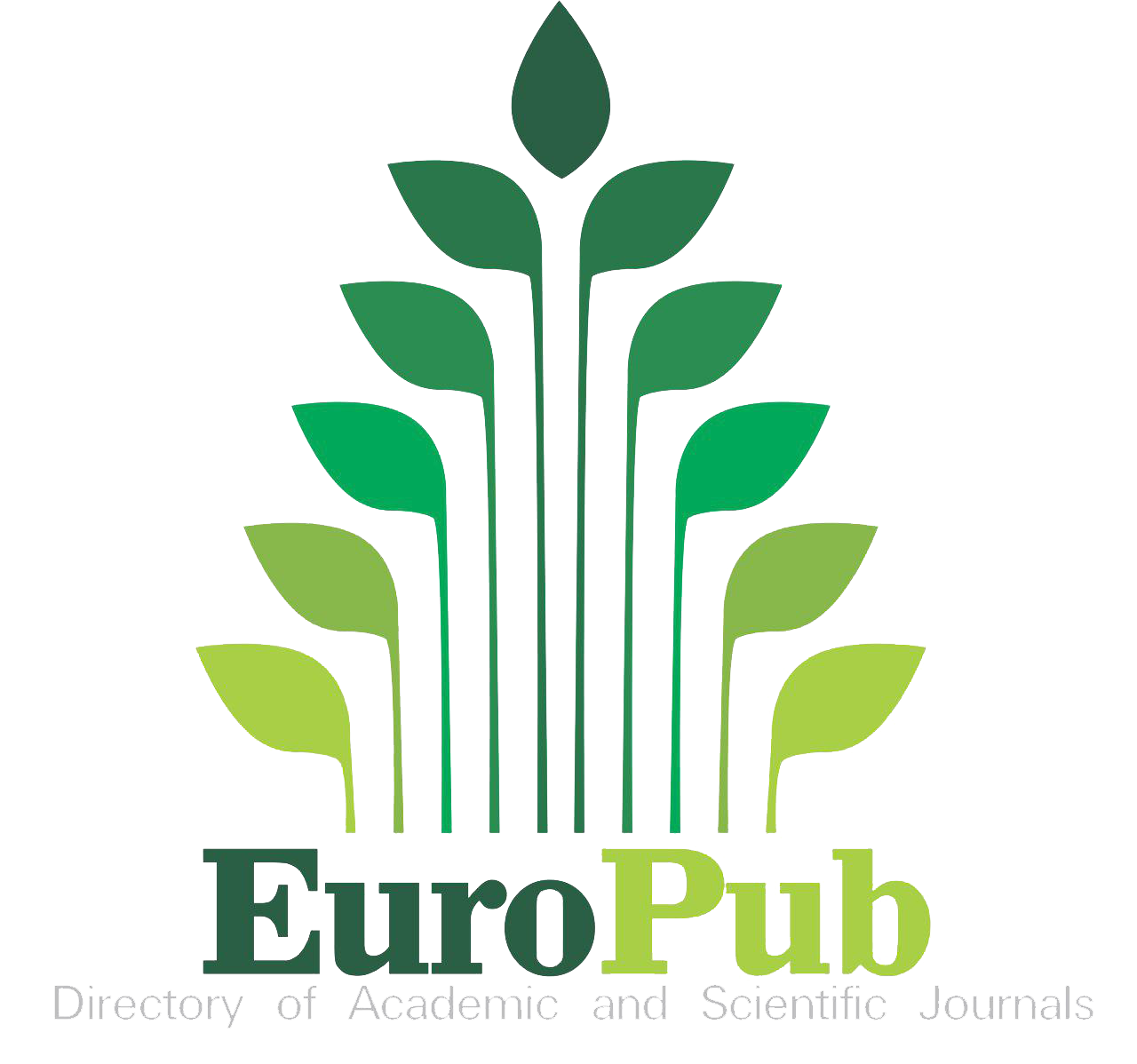Course Reinvention Guide through Realistic Mathematics Education to Improve Group Concept Understanding
Abstract
Keywords
Full Text:
PDFReferences
Akker, J.V. (2010). Curriculum Desain Research. Proc. the seminar conducted at the East China Normal University, 2010, paper 2, p. 37.
Booker, G. (2009). Algebraic Thinking: Generalising Number and Geometry to Express Patterns and Properties Succinctly.
Cobb, P. (2000). Conducting Teaching Experiments in Collaboration with Teachers. In A. Kelly & R. Lesh (Eds.). Handbook of Research Design in Mathematics and Science Education, Mahwah, NJ: Erlbaum, 307-334.
Cook. J.P. (2012). A Guided Reinvention of Ring, Integral Domain, and Field. Dr. Eng. Dissertation. The Graduate Faculty, Norman, Oklahoma.
Findell, B. (2001). Learning and Understanding in Abstract Algebra. Doctoral Dissertation, The University of New Hampshire. Unpublished.
Fitri et al. (2017). Meningkatkan Kemampuan Representasi Matematis Melalui Penerapan Model Problem Based Learning. Jurnal Dedaktik Matematika, 4, 59-67.
Frudenthal, Hans. (2002). Revisiting Mathematics Education. London: Kluwer Academic Publishers.
Gravemeijer, K. (1999). How Emergent Models May Foster The Constitution of Formal Mathematics. Jurnal Mathematical Thinking and Learning, 2, 155-177.
Gravemeijer, K. (2008).”RME Theory and Mathematics Teacher Education. Tools and Processes in Mathematics Teacher Education, 6, 283-302.
Gravemeijer. K. (2004). Learning Trajectories and Local Instruction Theories as Means of Support for Teachers in Reform Mathematics Education. Jurnal Mathematical Thinking and Learning, 6, 105-128.
Larsen, S. (2013). A Local Instructional Theory for The Guided Reinvention of The Group and Isomorphism Concepts. Journal of Mathematical Behavior, 32, 712-725.
Lestari, L. and Surya, E. (2017). The Effectiveness of Realistic Mathematics Education Approach on Ability of Students’ Mathematical Concept Understanding. International Journal of Sciences: Basic and Applied Research (IJSBAR), 34, 91-100.
Lockwood, E., Johnson, E., and Larsen, S. (2013). Developing Instructor Support Materials for Aninquiry-Oriented Curriculum. Journal of Mathematical Behavior, 32, 776-790.
National Council of Teachers of Mathematics. (2000). Principles and Standards for School Mathematics. USE: Trademark of Key Curriculum Press.
National Research Concil. (2001). Adding It Up: Helping Children Learn Mathematics. Washington DC: National Academy Press.
Panhuizen, M. (2000). Mathematics Education in The Netherlands: A Guided Tour. Freudenthal Institute Cd-rom for ICME9, Utrecht: Utrecht University.
Panhuizen, M. (2003).“The Didactical Use of Models in Realistic Mathematics Education: An Example from A Longitudinal Trajectory on Percentage. Kluwer Academic Publishers, 54, 9-35.
Plom, T. (2010). Educational Desaign Research: An Introduction. Proc. the seminar conducted at the East China Normal University, 2010, paper 1, p. 9.
Saputro, B.A. (2012). Grup Permutasi Siklis dalam Permainan Suit. Jurnal Ilmiah Program Studi Matematika STKIP, 1, 153-158.
Sugiatno. (2016).“Permainan ”Sut” Membentuk Grup Dolanan. Jurnal Pendidikan Matematika, Universitas Tanjungpura.
Sweden. (2000). Fundemental of Teaching Mathematics at University Level. Imperial Collage Press.
Swinyard, C. (2011). Reinventing The Formal Definition of Limit: The Case of Amy and Mike. Journal of Mathematical Behavior, 30, 93-114.
Turocy., Theodore, L., and Stengel, Bernhard V. (2001). Game Theory, CDAM Research Report LSE-CDAM.
DOI: http://dx.doi.org/10.26737/jetl.v3i2.798
Refbacks
- There are currently no refbacks.

This work is licensed under a Creative Commons Attribution-NonCommercial 4.0 International License.
Published by:
Institute of Managing and Publishing of Scientific Journals STKIP Singkawang
Sekolah Tinggi Keguruan dan Ilmu Pendidikan (STKIP) Singkawang
Address : STKIP Singkawang, Jalan STKIP - Kelurahan Naram Singkawang, Kalimantan Barat, INDONESIA, 79251
No. Telp. : +62562 420 0344
No. Fax. : +62562 420 0584
JETL (Journal of Education, Teaching, and Learning)
e-ISSN : 2477-8478
p-ISSN : 2477-5924

Editor in Chief Contact: [email protected] / Wa: +6282142072788
Publisher Contact: [email protected] / Wa: +6282142072788
Management Tools
JETL Indexed by:
JETL (Journal of Education, Teaching, and Learning) is licensed under a Creative Commons Attribution-NonCommercial 4.0 International License.











